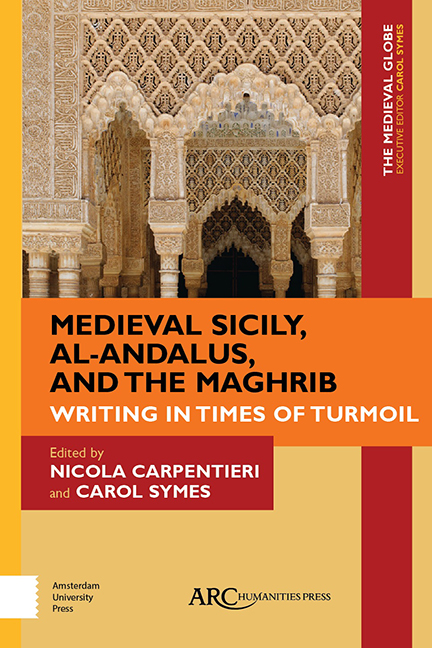Book contents
- Frontmatter
- Contents
- Acknowledgements
- Introduction
- The Indiculus luminosus and the Creation of a Ninth-Century Prophetic Conflict between Christianity and Islam
- Empire and Caliphate in the Life of John of Gorze
- The Writing of Munāẓarāt in Times of Turmoil: Disputations inFatimid Ifrīqiya
- Messaging and Memory: Notes from Medieval Ifrīqiya and Sicily
- “And God Dispersed Their Unity”: Historiographical Patterns in Recounting the End of Muslim Rule in Sicily and al-Andalus
- A Wondrous Past, a Dangerous Present: The Egyptian Temple of Akhmīm and the Martorana Church in Palermo, as Seen through Ibn Jubayr’s Travelogue
- How Does a Moorish Prince Become a Roman Caesar? Fictions and Forgeries, Emperors and Others from the Spanish “Flores” Romances to the Lead Books of Granada
- Index
“And God Dispersed Their Unity”: Historiographical Patterns in Recounting the End of Muslim Rule in Sicily and al-Andalus
Published online by Cambridge University Press: 20 November 2020
- Frontmatter
- Contents
- Acknowledgements
- Introduction
- The Indiculus luminosus and the Creation of a Ninth-Century Prophetic Conflict between Christianity and Islam
- Empire and Caliphate in the Life of John of Gorze
- The Writing of Munāẓarāt in Times of Turmoil: Disputations inFatimid Ifrīqiya
- Messaging and Memory: Notes from Medieval Ifrīqiya and Sicily
- “And God Dispersed Their Unity”: Historiographical Patterns in Recounting the End of Muslim Rule in Sicily and al-Andalus
- A Wondrous Past, a Dangerous Present: The Egyptian Temple of Akhmīm and the Martorana Church in Palermo, as Seen through Ibn Jubayr’s Travelogue
- How Does a Moorish Prince Become a Roman Caesar? Fictions and Forgeries, Emperors and Others from the Spanish “Flores” Romances to the Lead Books of Granada
- Index
Summary
BETWEEN THE SECOND half of the eleventh and the early twelfth centuries, the crisis affecting the entire dār al-Islām (Islamicate world), in particular the western Mediterranean, became evident. As the First Crusade got under way in the east (Jerusalem fell in 1099), in the west the Norman conquest of Sicily was complete with the capture of Palermo in 1072 and of Siracusa in 1086. In Muslim Spain, meanwhile, an unstoppable process of fragmentation began. The collapse of the Umayyad caliphate led to the emergence of several small kingdoms, militarily and politically weak and constantly warring with one another. The Christian kingdoms to the north took advantage of this discord in Andalusian Islam, laying the foundations for a military advance that was crowned in the early thirteenth century by the great victory of Alfonso VIII of Castile, Peter II of Aragon, and Sancho VII of Navarre at Las Navas de Tolosa, which slowly but inexorably led to the end of Muslim Spain.
An ample academic bibliography has explored and analyzed the features and causes of this crisis in Islamic political power in the Maghrib, and the new configurations born out of what was, in many ways, the end of an era. But the crisis of the eleventh century also offers an opportunity to tackle an issue that has not been extensively studied: how Islamic historiography dealt with the themes of defeat, loss, and the complete disappearance of significant territories within the dār-al-Islām.
To contextualize this investigation, we should first underline three important aspects of this historiography. First, my analysis is based on the recognition that history was a branch of literature, which means that we must account for the strong narrative dimensions characteristic of Arabic non-fiction and of historiography in particular, according to a relatively new perspective in scholarship on Islamic medieval historiography. For it is only over the last three decades that scholars have started to consider the medieval Islamic historian as possessing an authorial intention, rather than as a mere compiler or paraphraser of earlier works, and to read their works as literary products that reflect strategies of compilation, not as mere repositories of factual information.
- Type
- Chapter
- Information
- Medieval Sicily, al-Andalus, and the MaghribWriting in Times of Turmoil, pp. 105 - 126Publisher: Amsterdam University PressPrint publication year: 2020

